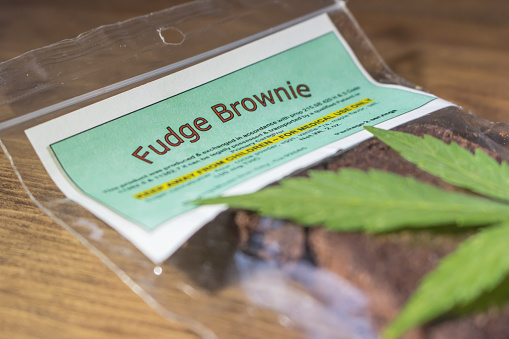Editor’s note: Sarah Browne is founder of Redmond Browne Research, London.
A multitude of states have legalized marijuana and politicians are introducing landmark bills. The question for many is no longer will new cannabis affect your business but when. In part one of this two-part article I looked at the industries most heavily affected by cannabis, along with research and recruitment challenges. If that article left you intrigued you may be asking, “How do I jump in?” In this article I’ll work to provide you with tips on recruiting, looking at medical vs. recreational cannabis as well as steps for managing your project.
Medical vs. recreational
A t the core of the cannabis zeitgeist is the stark difference between medical marijuana users and recreational, also known as adult-use. Some would label this segmenting as functional vs. fun. Despite the popular claim that many medical marijuana users are really recreational tokers in disguise, recruiters quickly discover that buying into this dubious idea wastes valuable time and money. Researcher Bethany Murphy Gomez, director of research at research firm Brightfield Group, stresses the importance of understanding these essential distinctions.
t the core of the cannabis zeitgeist is the stark difference between medical marijuana users and recreational, also known as adult-use. Some would label this segmenting as functional vs. fun. Despite the popular claim that many medical marijuana users are really recreational tokers in disguise, recruiters quickly discover that buying into this dubious idea wastes valuable time and money. Researcher Bethany Murphy Gomez, director of research at research firm Brightfield Group, stresses the importance of understanding these essential distinctions.
“As with recruiting in any industry, it is critical that you are highly specific with your recruiting criteria and the language you use in your questions. If you are surveying medical marijuana patients, they will get defensive if you refer to them as a consumer or discuss consumption the same way you would with recreational customers – which will kill your response rate,” says Murphy Gomez. “They are patients,not consumers – they are medicatingusing cannabis. This was the start of the cannabis movement and this plant is truly a medicine for hundreds of thousands of people with very real medical conditions. They do not appreciate being treated as if they are doing this for fun.”
Carmen Brace, founder of Aclara Research, reinforces this concept. “We have a typed research panel of cannabis patients/consumers and hemp (high CBD) consumers. Cannabis consumers are easier to source via traditional channels but patients are more difficult,” says Brace. “State registries indicate around 2.5 million adult patients across the U.S. – a 1 percent IR. At this low rate, we leverage our cannabis industry partners to expand the panel with high-quality respondents at a lower cost.”

Managing your project
The cost involved in a recruit is another cannabis quirk. “The costs per recruit when working with most panel providers on cannabis usage are relatively crazy,” says Murphy Gomez. “When we first started, we were looking at $8 per complete for anyone using cannabis, which is really challenging to work with given the tight budgets in the cannabis space. It also makes respondents even more expensive when you are looking at focusing on consumers of a particular category of products – e.g., edibles consumers. I literally laughed at some of the first quotes I got working with cannabis – they were so high there was absolutely no way to make it work on a budget that would work for my client. Some recruiters even refuse to work with surveys where you are asking about cannabis usage in prohibition states or ask about usage prior to legalization. This is really important if you are looking to understand and calculate substitution effects.”
“Respondents are expecting higher incentive levels, which increases our engagement costs over time,” says Brace.
To properly manage your project you need to consider the following:
The screener. Another cannabis idiosyncrasy: Many users don’t actually know what they’re using. Is their favorite product CBD-only? Hemp? CBD + THC? Did a friend whip that edible up in a Big Sur kitchen? Make sure the screener asks where they bought the product.
Budget. Project budgets are the crux of the cannabis craziness. Unlike previous emerging industries (digital/tech) which were powered by giant corporations (Microsoft, AOL, HP) very early on, the cannabis field is currently driven largely by startups and small companies. Although some are growing into the role – especially if Canada, Israel, Germany and the U.K.’s GW Pharmaceuticals are included in the mix – there are few big profitable players with money earmarked for market research. Indeed, one of the greatest hurdles we face is that so many cannabis workers are unfamiliar with market research and lack knowledge of standard protocols. Many startups are data-hungry yet unsure of how to put the data to work for them. This is beginning to shift as a deluge of research-experienced professionals jump from other fields to cannabis. A significant portion come from tech, and these pros bring with them a quest for machine learning, AI, predictive analytics and other dynamic tools.
“Our clients are CPG companies, marketing and consulting agencies that see the implications of expanding legal access to cannabis and hemp products on adjacent categories – nutraceuticals, functional foods, OTC medications, supplements, alcohol, etc.,” says Brace. “Most clients are in the investigation phase – moderate budget allocation – but as legal access expands, so will the budgets.”
Be prepared to walk through market research basics. The difference between qual and quant. Reasons for costs, best practices and legalities. Many people in the cannabis industry will have never heard of screeners, incidence rates or specifications. Plan for extra time when presenting your proposal, project design and deliverables.
Confidentiality. Cannabis users may have an ingrained sense of distrust and even fear about revealing usage. Many discovered marijuana during its stigmatized underground era; others continue to be concerned about arrests and legal issues. Even in states like California where marijuana use is widely accepted, it’s not unusual for a professional to guard this activity from coworkers and bosses.
Over-recruit and expect last-minute cancellations. Researchers typically have a list of people and places to mine for recruiting. There are the old standbys: employees, salespeople, suppliers and distributors. Next on the list? E-commerce sites with a wealth of purchaser contact information. Or your database of e-mails. You can also turn to a panel company or a non-traditional respondent recruitment company such as Respondent.io.
Once, I was convinced I’d found the perfect respondent for a mainstreaming marijuana study until my team received a frantic phone call from the panicked woman. She’d just received a big promotion and she didn’t want the VP to find out she was “a stoner.” This same scenario played out again with a mom who didn’t want her husband to know she’d ditched wine for weed, as well as a man studying for the bar who was afraid his vape purchases would be discovered by the local bar association. In all of these cases, we had painstakingly complied with opt-in protocols, even going above-and-beyond with phone calls and/or video interviews. Also be prepared to boost the incentive; this can be a game-changer, especially as it often signals that the research is legitimate.
Those elusive e-mails. Every researcher confronts the fake/dead e-mail issue when recruiting but when it comes to cannabis recruits, assume that at least 60 percent of e-mails harvested from social sites, product purchase lists, etc., will not be viable. Instead, find a panel house that vigorously vets their panels’ contact information along with key psychographics and legalities. Do they have a medical marijuana card or other documentation in states that require them? Are they 21+? What about how personal data is used and stored? Some states refuse to provide sales or other usage data to the government (which can be reassuring to research participants). Recruiting globally is another hodgepodge of rules and regulations. These data privacy and protection policies go beyond the EU’s General Data Protection Regulation.
Culture. Many users reject the establishment – corporations, institutions, businesses – and a big chunk of any market research client list is going to include these types of organizations. In my Microsoft days, once we dropped the magic word “Microsoft” our groups filled up fast but the opposite response is frequently the case in cannabis. Often the workaround in traditional projects is to conduct a blind study. This decision occasionally reassures potential respondents but with others, it can create even more paranoia. One possible in-depth interview participant was convinced the client was the government: “No way are they going to get me on tape!”
The culture of cannabis
 “If you don't actually know the proper terminology or understand the industry, product types, occasions of consumption and branding trends, the difference between THC and CBD or what micro-dosing is, do not try to write a survey. Definitely do not try to conduct a focus group. Intelligent answers will come from intelligent questions. If not properly worded and nuanced, your responses will be unusable,” says Murphy Gomez. “These speed bumps led us to rethink traditional recruiting. We started integrating our surveys with social so we could build a more cost-effective panel and generate more insights by using social listening and natural language processing to extrapolate results to a much larger audience. The result has been highly precise targeting, with far deeper insights.”
“If you don't actually know the proper terminology or understand the industry, product types, occasions of consumption and branding trends, the difference between THC and CBD or what micro-dosing is, do not try to write a survey. Definitely do not try to conduct a focus group. Intelligent answers will come from intelligent questions. If not properly worded and nuanced, your responses will be unusable,” says Murphy Gomez. “These speed bumps led us to rethink traditional recruiting. We started integrating our surveys with social so we could build a more cost-effective panel and generate more insights by using social listening and natural language processing to extrapolate results to a much larger audience. The result has been highly precise targeting, with far deeper insights.”
Amid the diligent efforts to mainstream marijuana, companies are struggling to understand where the "ganja" may still fit in. Murphy Gomez says, "There is a massive underestimation of the sheer size and culture surrounding cannabis usage of the ganja crowd. In a recent analysis we did, analyzing a random sample pulled from more than half a million people following a cannabis brand on social media, more than 90 percent were all-in on ganja culture. If they like running, they are posting about cannabis and running. If they like music, it was cannabis and music. All of their posts, everything they were following was all cannabis related.”
While you're building your cannabis personas, test some that embrace the original "power to the plant" culture. Goddess and pioneer personas honor these attitudes and beliefs while wellbeesand canna-mamasreflect today's wellness culture. Boomerangs are jumping back to cannabis decades after college in search of well-being, pain relief and an alternative to pharmaceuticals.
Brace’s approach to the cannabis industry is indicative of why many researchers eagerly enter the space, despite its challenges. "I believe that this work needs to be done and communicated in a professional way to change the consciousness around the plant,” says Brace, "which benefits everyone."
As to that blazing question I know you're keen to ask: No, you don’t have to smoke or consume cannabis to work in the field. I don’t have a single bong tucked in my desk. But there may be an almost empty pint of Ben & Jerry’s Half-Baked in the freezer.
